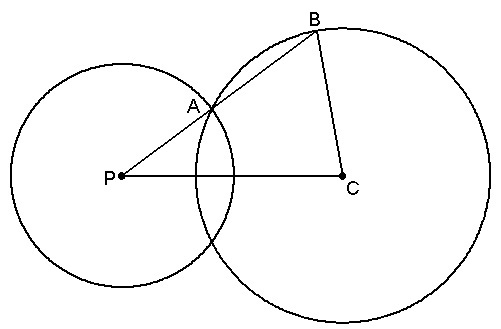small and big circles
 In the figure shown above, the small circle has its center at
while the big circle has its center at
. If
and
, what is the length of
In the figure shown above, the small circle has its center at
while the big circle has its center at
. If
and
, what is the length of
If your answer is of the form where and are coprime positive integers, find
The answer is 14.
This section requires Javascript.
You are seeing this because something didn't load right. We suggest you, (a) try
refreshing the page, (b) enabling javascript if it is disabled on your browser and,
finally, (c)
loading the
non-javascript version of this page
. We're sorry about the hassle.
P A × P B = ( P C ) 2 − r 2
3 P B = 6 2 − 4 2
3 P B = 3 6 − 1 6
3 P B = 2 0
P B = 3 2 0
It follows that,
A B = 3 2 0 − 3 = 3 2 0 − 3 9 = 3 1 1
Finally,
a + b = 1 1 + 3 = 1 4